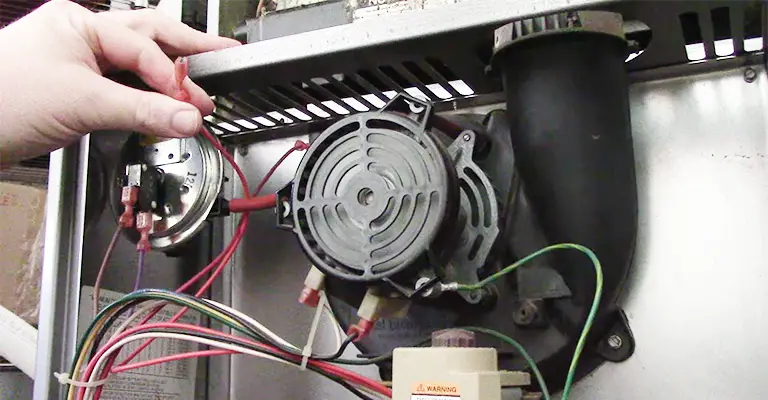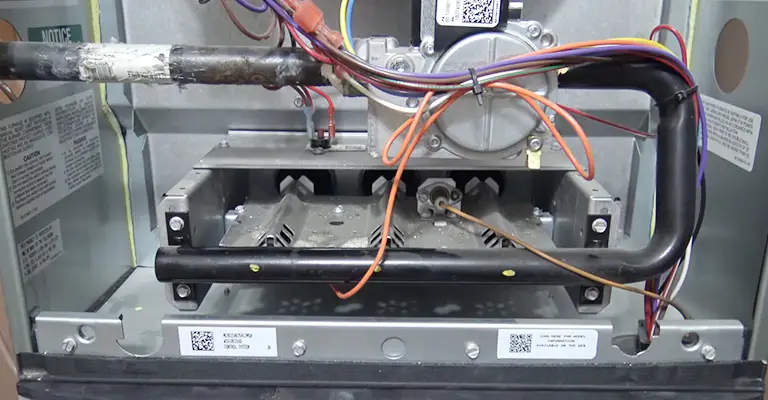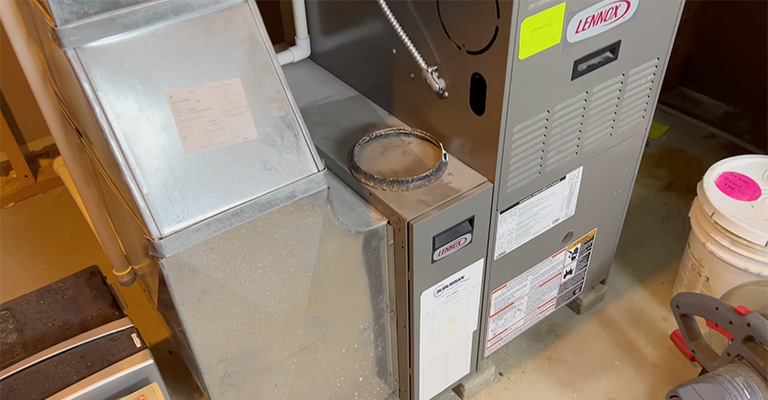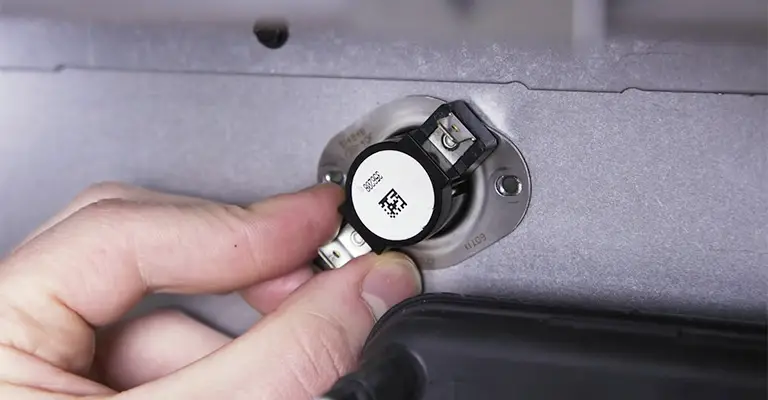If you find yourself repeatedly facing the frustration of a high-limit switch that keeps tripping in your furnace, you’re not alone.
The high-limit switch is an essential safety component that protects your furnace from overheating and potential damage.
However, when it trips frequently, it can disrupt the heating process and leave you without the necessary warmth. So, why does my furnace high temp switch keep tripping?
The limit switch trips when the furnace’s air temperature gets too hot, preventing overheating.
A furnace high-limit switch that trips due to overheating may indicate an issue with ventilation, such as a blockage in the airflow.
Clean your air filter if it is dirty and replace it if necessary. It is most often the dirty filter that causes airflow issues. Ensure the air circulates adequately throughout the home by opening all vents and registers.
Moreover, a dirty blower motor can cause overheating, which is one reason the furnace’s high-limit switch keeps tripping. The entire system and blower motor are cleaned thoroughly by scheduling a maintenance tune-up.
How To Tell If The High Limit Switch Is Tripped?
Several ways may indicate that your furnace’s high-limit switch is tripped:
Immediately after your furnace begins to heat, it ends its cycle. If the furnace refuses to ignite, but the blower fan runs, then the high-limit switch might have tripped.
Several trips of a furnace’s high-limit switch can cause it to go into hard shutdown. Before a professional can diagnose the furnace, it must be protected from damage.
Dealing with a Tripping High Limit Switch in Your Furnace

Heating cycles will end shortly after they begin, which indicates that the furnace high limit switch is tripping.
There is a problem known as short cycling, and it is known to cause excessive energy consumption, which leads to faster furnace wear and tear.
To permit the furnace high-limit switch to operate properly, there must be a solution to underlying issues within the system.
1. Defective Limit Switch
The high furnace limit switch will wear out over time if tripped frequently. If your gas furnace is not reset or replaced by then, it will enter a lockout mode and won’t be able to operate. If you need this repair done, speak with your technician.
2. Dirty Flame Sensor

The flame sensor rod of the high-limit switch monitors air temperatures inside the furnace’s plenum. The high furnace limits switch trips because it cannot correctly detect temperatures if it is dirty.
Please follow these directions carefully when cleaning the flame sensor rod:
- You can locate the high-limit switch outside the plenum by removing the furnace access panel.
- The plenum switch can be removed by unscrewing it.
- Use steel wool or sandpaper to remove soot and other material stuck on the rod.
- You need to replace the access panel and the switch.
- Replacing the damaged flame sensor is possible if it cannot be cleaned. Replace this part properly by contacting an HVAC technician.
3. Your Furnace Might Be Too Big
A furnace that cycles rapidly may be too large for the house. The increase in temperature in a small house will cause the furnace to run too frequently, which leads to the house being too hot too quickly.
The “Load Calculation,” which determines whether incorrect furnace size is causing short cycling, can help determine if short cycling has been a problem for you for a long time.
When your furnace’s load calculation shows that it’s oversized by a lot, you must make some decisions.
A gas valve with a lesser capacity might be able to replace the one on your furnace. So, you might want to replace your gas valve with a smaller one if you have a 120,000 BTU furnace but an 80,000 or 100,000 BTU one.
4. Airflow Issues that Trip the Limit Switch

As a result of less airflow, heat doesn’t escape from the furnace as quickly as it should, resulting in an overheating furnace.
It’s pretty straightforward. To increase airflow in the home, a homeowner can do two things simply and inexpensively. In the third solution, costs are higher.
- Maintain your furnace’s filter and/or replace it regularly. A furnace filter removes particles from the air that can damage the furnace and harm the occupant’s health. Airflow can be restricted by dirty furnace filters, leading to overheating.
- Additionally, homeowners can open the air supply vents in each room to allow maximum cool airflow into the furnace.
- Additionally, an overheated furnace can be caused by a dirty blower. Eventually, blowers will accumulate dirt. This reduces airflow over the heat exchanger and slows down the blower. Cleaning your HVAC system as part of an annual maintenance schedule is a good idea.
Furnace Limit Switch & How It Works
In a furnace, the high-limit switch controls various operating aspects as well as safeguards the system. In this component, a metal plate is mounted to a probe that detects temperatures and is connected to the blower motor and gas valve.
A limit switch performs two functions.
First, the limit switch dictates when the blower fan turns on and off. By sensing the temperature of the air supply, the fan turns on when the water is heated, thus circulating the air throughout the home.
By doing so, the blower continues to operate after the furnace has turned off its burners, so all heated air is distributed throughout the house.
To detect overheating, the limit switch also detects the supply air temperature. The furnace’s interior can overheat if the supply air is too hot, damaging components.
As temperatures rise, the limit switch trips, which shutdowns the system and locks the furnace until it cools down.
An overheated furnace can crack the heat exchanger, which could lead to carbon monoxide leaks into the home. This isn’t a good deal.
The problem with your furnace limit switch is that simply resetting it won’t solve the problem. This issue needs to be resolved.
Final Words
A furnace uses lethal electrical voltages and highly flammable gas. Consult a professional if you are uncertain about any of the procedures described here.







